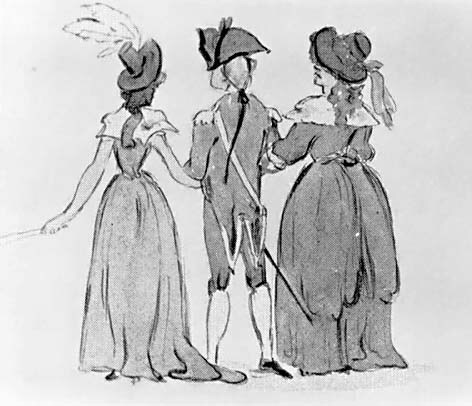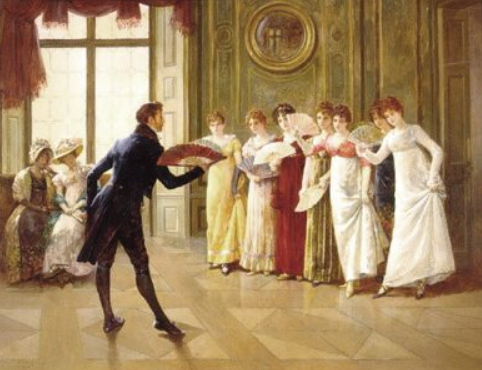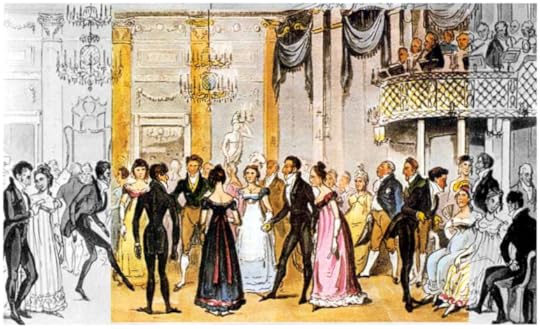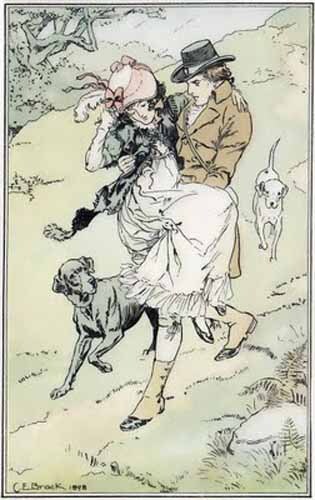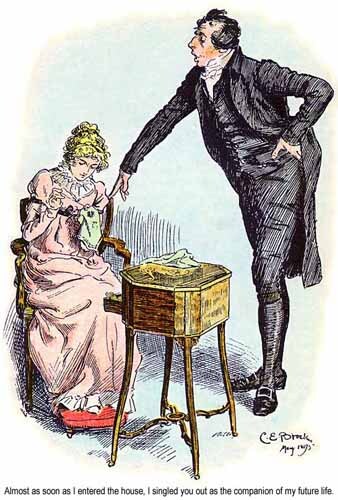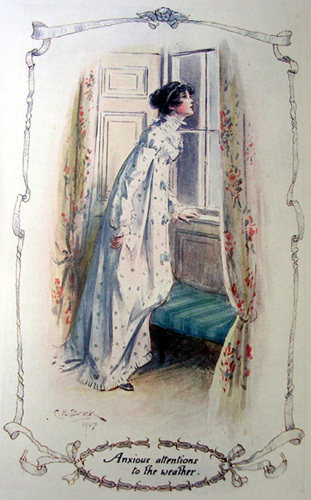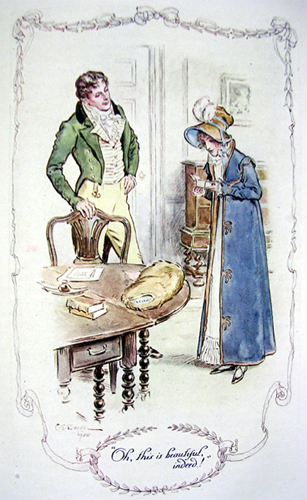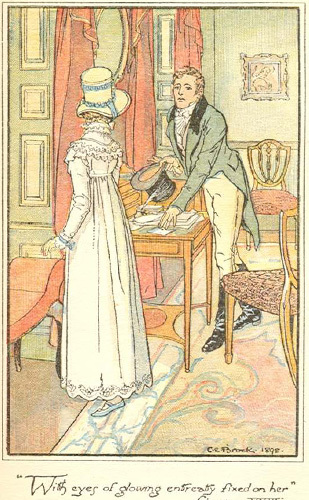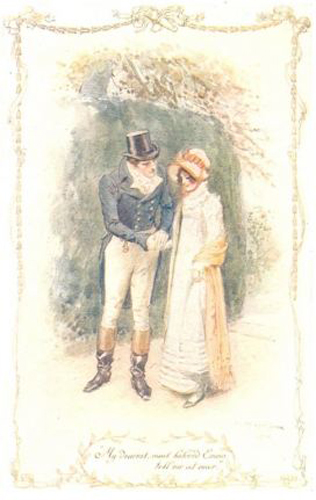Vanessa Riley's Blog, page 55
January 17, 2025
An Alternative Elopement
Wanting to spare the heroine from an arranged marriage to an ogre, the hero suggests that he marries her and they elope. The heroine agrees, since she has had a tendre for the hero since she was a schoolgirl. Unfortunately, the 1754 Hardwick Marriage Act has stiffened the laws of marriage. The heroine hasn’t yet reached her majority and they can’t take the time to obtain a special license in London. Waiting for the banns to be called is out of the question, as that will take three weeks and the parents and ogre suitor will catch up with them long before then, even if they can obtain parental permission for the under age—under twenty-one—heroine. Their only alternative is to elope to Gretna Green in Scotland.
Unfortunately again, Scotland is close to four hundred miles away. They must hire a post chase or go on horseback and, because the journey will likely take more than a week to accomplish, they will have to stay overnight before they are married, unacceptable to these two proper—other than eloping—young people. The situation appears hopeless.
Except it isn’t. The hero has some friends amongst the fishermen who have told him about carrying an eloping couple to an alternative marriage location.
 Eloping in Style
Eloping in StyleIn approximately fifteen hours of sailing,
the eloping couple can reach one of the Channel Islands, mainly the Island of Guernsey. Evidence presents us with the knowledge that boats waited at Southampton, Hampshire, to carry eloping couples across the channel. Logic says Plymouth, Falmouth, and a few other southern ports just might have provided the same service.
Guernsey is closer to France than England. Although it belongs to England, many of the laws differ from those of England. The marriage laws are one of those even today.
So many couples eloped to Guernsey that tracking the history of residents of the island has proven difficult, for distinguishing those who simply arrived in St. Peter Port to get married in haste, from those who lived on the island and married in the same parish, isn’t easy two hundred years later. Genealogists have focused on whether or not couples later baptized their children in that same parish in order to trace ancestry to Guernsey.
Nowadays, one does not need a license to marry in a Church of England ceremony on Guernsey. One does need a license for a civil ceremony on Guernsey.
So if your couple finds themselves hundreds of miles from Gretna Green, they can hop onto a fishing boat, or perhaps the hero’s yacht, and sail across the Narrow Sea to a channel island. First, however, he might wish to ensure that the heroine doesn’t get seasick on the way.
Laurie Alice Eakes
Originally posted 2012-06-25 06:00:00.
The post An Alternative Elopement first appeared on Vanessa Riley's Regency Reflections.
January 16, 2025
Real Life Romance–And How to Keep it Alive
Hi everyone, Naomi here today, talking about real-life love, and ready to have some fun with it!
So often in romance novels, especially Regency romances, a couple is thrust together and sometimes even forced to marry due to circumstances beyond their control. In fact, I’m finishing a novel now where indeed, the hero and heroine are caught together in an unbecoming manner, and you guessed it: there’s wedding bells ringing by halfway through the story. It doesn’t matter that they’re not in love and didn’t want to marry, by the end of the book they’ll be head-over-heels for one another.
But that’s one of the wonderful things about fiction: everything always works out in the end.
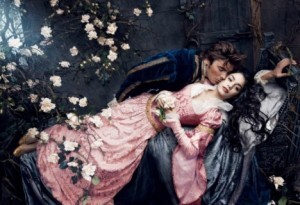 If only real life always turned out so well. Unfortunately our lives seem to go the exact opposite direction from those of our romance novel counterparts. In society today, we meet, fall in love, get married, and then fall out of love and get unmarried in almost less time than we spend on the love and wedding stuff. No one forces us to marry because we get caught kissing or sneaking off to enjoy a few private moments of conversation. Yet how does our divorce rate compare to that of Regency England?
If only real life always turned out so well. Unfortunately our lives seem to go the exact opposite direction from those of our romance novel counterparts. In society today, we meet, fall in love, get married, and then fall out of love and get unmarried in almost less time than we spend on the love and wedding stuff. No one forces us to marry because we get caught kissing or sneaking off to enjoy a few private moments of conversation. Yet how does our divorce rate compare to that of Regency England?
Yikes! Probably better not look to closely at that one. So amidst this month of June with all its wedding bells and happily-ever-afters. Let’s take a quick look at three principles that can help keep romance alive in our real-life marriages.
1. Spend time together. You might think this one rather obvious. After all, at one point, you and your hubby spent a whole lot of time together . . . back when he was your future hubby or first dating you. But somehow, as the years pass, you each become busy with different things. Working, raising kids, buying a house, making improvements to the house, carting your kids to soccer and ballet, and the list goes on. Yet it’s still important that you spend time together. Hire a babysitter for one night a month. Or feed your kids hotdogs and put them to bed early once every couple weeks. Then make (or buy, if you’re me) a nice dinner for your husband.
2. Pay attention. Every woman wants to feel that her husband loves her. But on the flip side, women also need to ask themselves whether they make their husbands feel loved. Do you know when he has a bad day at work or a mountain of chores to do at home? Or do you let him live his own life until you need something from him? One of the easiest ways to pay attention is to greet him when he gets home. Whether he’s been at work or running errands, put down the phone, spatula or laundry basket, and call your kids away from their toys or the TV to greet their dad. If you make your man feel like he’s important to you, I’m betting he’ll reciprocate and show his wonderful wife how important she is to him.
3. Say thank you. Having a general attitude of gratefulness toward the man you married can do miracles for your relationship. Of course you’re grateful that he pays some (or all) of the bills and takes the trash out on trash night. But do you tell him “thank you” or simply take for granted that he’ll work endless hours?
Now let’s take the situation a step farther. Regardless of how wonderful a wife you are, there will always be those busy times when you ask for help with sweeping or putting the kids to bed or doing the dishes or any other number of household tasks. When your husband takes time out of his busy schedule to help you, do you thank him? Or do you look at the kitchen floor, see a dog hair in the corner, and tell him he didn’t do a good enough job sweeping? Try to be grateful for the effort your husband puts into helping rather than pick out his imperfections.
So there you have it. Three simple ideas. None of them are dramatic or life altering, but if you work hard at loving your husband, you might just might find real life turning out as wonderful as the lives of all those romance novel heroines.
****
 A mother of two young boys, Naomi Rawlings spends her days picking up, cleaning, playing and, of course, writing. Her husband pastors a small church in Michigan’s rugged Upper Peninsula, where her family shares its ten wooded acres with black bears, wolves, coyotes, deer and bald eagles. Naomi and her family live only three miles from Lake Superior, where the scenery is beautiful and they average 200 inches of snow per winter. Naomi writes bold, dramatic stories containing passionate words and powerful journeys. Her debut novel, Sanctuary for a Lady, released in April of 2012. For more information about Naomi and her writing, visit www.naomirawlings.com
A mother of two young boys, Naomi Rawlings spends her days picking up, cleaning, playing and, of course, writing. Her husband pastors a small church in Michigan’s rugged Upper Peninsula, where her family shares its ten wooded acres with black bears, wolves, coyotes, deer and bald eagles. Naomi and her family live only three miles from Lake Superior, where the scenery is beautiful and they average 200 inches of snow per winter. Naomi writes bold, dramatic stories containing passionate words and powerful journeys. Her debut novel, Sanctuary for a Lady, released in April of 2012. For more information about Naomi and her writing, visit www.naomirawlings.com
Originally posted 2012-06-22 10:00:00.
The post Real Life Romance–And How to Keep it Alive first appeared on Vanessa Riley's Regency Reflections.
On Courtship
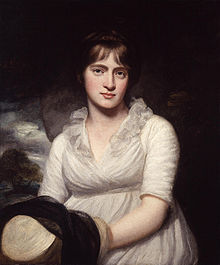 Authoress Amelia Opie
Authoress Amelia OpieWhoever thinks romance and love matches didn’t exist before the 20th century ignores a lot of evidence to the contrary. If women of all strata of society from seamstresses to young ladies of the ton read novels which featured heroines pitted against alluring yet somewhat menacing men, where virtue and love triumphed in the end, this means they must have had a desire for romance. They not only took to reading but to writing novels themselves. Selina Davenport’s 1824 novel Preference, is a typical romance with a properly happy ending. She wrote 11 novels between 1814-1832. Other female authors of the period besides Jane Austen who wrote about love triumphing were Amelia Opie, Maria Edgeworth, and sisters Anna Maria and Jane Porter.
The evangelical writer Hannah More wrote, “Is a woman in low spirits? Let her console herself by writing a novel. Is she ill? Bored? Unhappily situated? Let her pour it all out into a novel.”* Do I detect a little sarcasm?
 Almack's
Almack'sDespite a young woman’s yearnings for love and romance, the regency period was governed by rules of etiquette. Numerous books were written to young men and women on the subject of how to behave in public—especially with the opposite sex. After the licentiousness of the Georgian era, the Regency period saw a rise of Evangelicalism, which stressed that women were the arbiters of morality, and it was part of their duty to make sure they didn’t tempt men, or fall victims to men’s baser instincts. Whereas in high society it was common for a man to have a mistress, an unmarried young lady must keep herself chaste and above any appearance of misbehavior. On the Marriage Mart, a woman’s purity was her highest asset.
For this reason courtship for a young lady meant being chaperoned whenever she went out (and, of course, never receiving a gentleman caller on her own). A gentleman had to ask for an introduction to meet a young lady he was interested in. After her official coming out into society, a young lady enjoyed the grown-up entertainments of balls, assemblies, concerts and other musical events, all to see and be seen. But everything was done in public. A young lady could never be alone with a young man who was not a family member or otherwise closely associated with the family.
Although parents desired a “suitable match” for their children, this did not mean strictly arranged marriages—for the most part. There is ample evidence in novels and correspondence of marriages based on love and mutual respect.
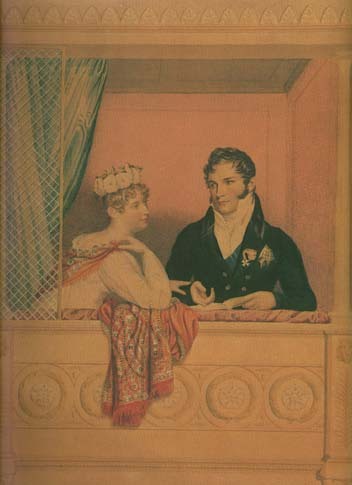 Princess and Prince at the opera National Portrait Gallery London
Princess and Prince at the opera National Portrait Gallery LondonThe most important love match of the era was that of the Prince Regent’s daughter Charlotte to a minor German prince, Leopold of Saxe-Coburg-Saalfeld. Even though her father and the British government had been negotiating her marriage to Prince William of Orange (the future king of the Netherlands), Princess Charlotte met young Leopold in the Czar’s entourage when the czar and his sister came to London during the summer of 1814. Eventually, the princess broke off her official engagement to the Dutch royal prince, causing all kinds of diplomatic furor and married her German prince on May 2, 1816, to the enthusiasm of the British people. They understood a love match. From all accounts it was a happy—though brief—marriage, since she died shortly after giving birth to their first child after only a year of marital bliss.
Matchmaking as shown in Emma also shows that romance was alive and well in the regency era. Jane Austen wrote, “Anything is to be preferred or endured, rather than marrying without Affection.”
 Vauxhall Gardens
Vauxhall Gardens
* Our Tempestuous Day by Carolly Erickson, William Morrow and Co., 1986, New York
Originally posted 2012-06-18 05:00:00.
The post On Courtship first appeared on Vanessa Riley's Regency Reflections.
January 15, 2025
May I Have This Dance?
Gentle Readers, I’d like to take a moment to introduce you to the newest member of the Regency Reflections family! You can learn more about Kristy L. Cambron on the Blog Editor bio page. We’re so excited to have her with us. Welcome, Kristy!
__________________________________________________
 The ball at Netherfield, Pride and Prejudice (2005)
The ball at Netherfield, Pride and Prejudice (2005)I love the power of dance to drop a layer of enchantment over a room.
I can recall one of the first things I said to my husband on our wedding reception dance floor. The lights had been dimmed and as the notes of our special song played, I whispered: “And my dance card will always be full...”
I meant it. For all the years my husband and I would share after that moment, I knew my future dances would always have a special partner.
Stunning dresses. Dapper gentlemen. Ladies hidden behind their fans. Lively music and sophisticated steps… Today that all-important first dance may be synonymous with the wedding celebration, but the Regency ballroom was just as alive with color and spirit as our reception dance floors are today.
Or dare I say, more so?
Though weddings were primarily private family affairs in the Regency (as opposed to the social events we see today), ballrooms and wedding parties alike were brought to life by vivid dance reels and lively music. After all, the ball was the social event by which all others were judged. Moreover, to grasp a partner’s hand in dance was often the only socially acceptable touch between an unmarried man and woman.
Affection was born and engagements followed, all over the steps of the most popular dances of the day…
~ The Cotillion
Distinguishing characteristics: Originated in France during the 18th century. Includes four couples dancing in square formations with elaborate steps and changing partners. French for petticoat, the term cotillion was said to have been coined after the flash of petticoats that could be seen as partners swiftly changed on the dance floor.
Interesting Fact: Georgette Heyer’s historical romance, Cotillion (1953), is one of her much loved Regency novels. Though a generally cheery novel, the title is mirrored in a story that centers around the overlapping love lives of four couples (much like the steps of the cotillion dance itself).
~ The Quadrille
Distinguishing characteristics: Another dance import from France. Similar to the cotillion, it includes four couples dancing in square sets but omits the repeating “chorus” dance. Was later combined with the popular waltz to form a hybrid of the two dances, the Waltz Cotillion (as seen in this video – click HERE).
Interesting fact: Introduced early in the Regency and immensely popular by 1815, the quadrille was a very lively dance that often adapted music from stage plays and was thought to be quite flirtatious at the time. A form of the quadrille can still be seen today in modern day square dancing.
~ La Boulanger
Distinguishing characteristics: A simpler dance for three couples. Often used as the last dance of the evening at a ball or party.
Interesting fact: As many dances could include quite intricate steps, dance masters were often hired by wealthier families to educate their children on the art of the popular dances. (A very popular dance master of the day was Thomas Wilson, who published many influential books on the art of dancing and etiquette.) For you Jane Austen fans, la Boulanger was a favorite of the authoress and was a dance declared by name in her novels.
~ The Waltz
Distinguishing characteristics: First popular in Vienna (1780s) but introduced to the English ballroom during the Regency. New sensation but slow to catch on because of the “closeness” enjoyed by two dancing partners.
Interesting fact: The waltz caused a bit of a scandal when it first popped onto the English ballroom scene around 1810. Because of the close proximity shared by two dancing partners, the embrace was thought improper and in fact, was often ridiculed by early opponents. In 1825, the Oxford English Dictionary actually defined the waltz as “riotous and indecent”. (Boyd Hilton, A Mad, Bad, and Dangerous People? England 1783–1846 (Oxford U P 2006).
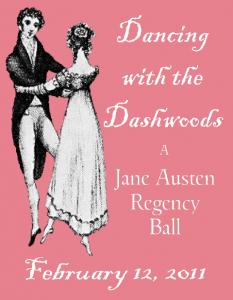 Feet tapping for more references? Here are some good ones:
Feet tapping for more references? Here are some good ones:
Click [HERE] to see an example of a stunning Regency Era ball gown.
Click [HERE] to hear samples of Regency Era dance music.
Click [HERE] to learn more about Regency dances from the Jane Austen Centre at Bath.
Whether it was one of the English country dances with the fun names (such as the “Teasing Made Easy”) or the classic Minuet, our Regency friends certainly knew how to fill up their dance cards.
May we always find ours full as well.
~ Kristy
Originally posted 2012-06-15 10:00:00.
The post May I Have This Dance? first appeared on Vanessa Riley's Regency Reflections.
January 14, 2025
Laurie Alice ~ Louise Gouge Interview
LaurieAlice: I’ve known Louise for many years and know she is her own worst critic. She is hard on herself in describing her own work. Let me assure you, this is truly a Regency romance.
 Meet Louise M. Gouge
Meet Louise M. GougeInterview Questions with Louise Gouge:
LAE: What drew you to write during the Regency Time Period?
Louise: I know it’s an old answer, but I just love Jane Austen’s classic books, so I wanted to try my hand at a Regency story. The strict social and moral codes seem to make happiness for a hero and heroine next to impossible. Can my couple who come from different social classes find true love in spite of all the social restrictions they face? Well, of course. It’s a romance. But can I make it an interesting journey along the way? That’s the challenge that Jane Austen met with success every time, in my opinion. I can only hope to do the same.
LAE: Tell us what year your book is set in and why you chose that particular time.
Louise: My book begins in late 1813 and ends in early 1814. My hero, a British major, has been wounded in the American War, which England was fighting at the same time they were fighting Napoleon (as was the rest of Europe). But the battle my hero fights to find his place in English society is every bit as difficult as the struggle he found in America. I chose this particular time period because I think wartimes always make interesting backdrops for romances.
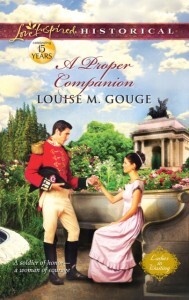 A Proper Companion by Louise M. Gouge
A Proper Companion by Louise M. GougeLAE: What’s your favorite, unique Regency aspect of the novel, something you wouldn’t be able to include in a novel set in another place or time?
Louise: Actually, I can’t think of a single thing. I’m too new at writing in this period to know all of the clever little stuff. (This is my first full-length Regency.) I must have some nerve, right? But I hope readers will find my hero and heroine compelling and will enjoy their pathway to happily ever after.
LAE: What are the biggest challenges to writing in the Regency Period?
Louise: Regency readers are very particular and knowledgeable about the era. I try very hard not to make a mistake, but I’m sure something has slipped through that I wasn’t aware of. Still, no one has slammed me so far. If I do make an error, I hope readers will gently inform me!
LAE: Who is your favorite Regency Author?
Louise: Much to my shame, I haven’t read any of the old Regency authors who really established the genre, which may be the reason I don’t know those unique things about the era. I do enjoy the stories by my fellow Love Inspired Historical authors: Regina Scott, Mary Moore, and Deborah Hale. From other publishers, I love Laurie Alice Eakes, MaryLu Tyndall, and Linore Rose Burkard.
LAE: What is your favorite Regency setting; e.g., London, country house, small village?
Louise: I like both the country manor house (with its village) and the London townhouse. The lavish homes in either place just stagger me, especially when one considers the poverty that existed barely a stone’s throw from either home.
LAE: What makes your hero and heroine uniquely Regency?
Louise: Other than the historical events taking place in the background, I actually think my hero and heroine’s story could be set in a rather wide span of English history from mid-Eighteenth Century to well into the Victorian age, perhaps even touching the Edwardian age. The main conflicts separating my would-be sweethearts are the societal structure and hero’s lack of career options. In England, these were basically unchanged for centuries, as we can see in the recent BBC television series, Downton Abbey.
LAE: Tell us about your book.
Louise: A Proper Companion, With her father’s death, Anna Newfield loses everything—her home, her inheritance, and her future. Her only piece of good fortune is a job offer from wounded major Edmond Grenville, whose mother requires a companion. The Dowager Lady Greystone is controlling and unwelcoming, but Anna can enjoy Edmond’s company, even if she knows the aristocratic war hero can never return her love. Even amid the glittering ballrooms of London, nothing glows brighter for Edmond than Anna’s gentle courage. Loving her means going against his family’s rigid command. Yet how can he walk away when his heart may have found its true companion?
LAE: When did your novel release and with what publisher?
Louise: A Proper Companion, from Harlequin’s Love Inspired Historicals, released in June 2012.
About Louise: Award-winning Florida author Louise M. Gouge writes historical fiction, calling her stories “threads of grace woven through time.” In addition to numerous other awards, Louise is the recipient of the prestigious Inspirational Readers’ Choice Award for her 2005 novel, Hannah Rose. With her great love of history and research, Louise has traveled to several of her locations to ensure the accuracy of her stories’ settings. When she isn’t writing, she and her husband love to visit historical sites and museums. Her favorite Bible verse is “He shall choose our inheritance for us” (Psalm 47:4), a testimony to her belief that God has chosen a path for each believer. To seek that path and to trust His wisdom is to find the greatest happiness in life. Read about Louise’s books at her Web site http://blog.Louisemgouge.com
For a chance to win A Proper Companion by Louise M. Gouge, leave a comment. We will draw a winner on June 20, 2012. Be sure to check back on this comment thread on that date to find out who won.
Originally posted 2012-06-13 05:00:00.
The post Laurie Alice ~ Louise Gouge Interview first appeared on Vanessa Riley's Regency Reflections.
Illustrating Jane Austen
Do you remember the first Jane Austen novel you ever read?
My first Jane Austen novel was an illustrated edition of Sense and Sensibility. I was hooked after only one chapter! And it was not only the colorful descriptions and witty dialogue that drew me in—I remember being fascinated but the accompanying illustrations. I know longer own my first copy of Sense and Sensibility, but to this day, I recall the illustrations in vivid detail.
One of the most celebrated illustrators of Jane Austen novels was Charles Edmund Brock. Brock lived from 1870-1938 and is widely recognized for his illustrations and line drawings of novels by Bronte, Elliot, Thackery, and many more. Even though Brock did not live during the regency period, he had a unique ability to capture the essence of the period in his illustrations. Here are a few well-known illustrations for you to enjoy:
Sense & Sensibility:
Pride and Prejudice:
N
Persuasion:
.
Emma
Emma:
Originally posted 2012-06-11 10:00:00.
The post Illustrating Jane Austen first appeared on Vanessa Riley's Regency Reflections.
January 13, 2025
Secrets of How to Love Your Husband, part 1, by Susan Karsten

Don’t you just love that phrase, “How to …”? How-to books, advice columns, lists of do’s and don’ts abound. God’s word has much great advice, and “secrets” abound, especially about loving. For example, Ephesians 4:32:
Be kind to one another, tenderhearted, forgiving one another, as God in Christ forgave you .
Since this one passage is so rich with gems for loving our husbands, let’s go no further.
Be kind to him. Choose kindness, even when he doesn’t earn or deserve it. Think back to 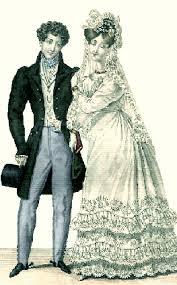 how you both showed each other your best during courtship and engagement, were you ever sour, moody, or impatient then?
how you both showed each other your best during courtship and engagement, were you ever sour, moody, or impatient then?
Be tenderhearted toward him and his failings. Love covers a multitude of sins (failings), so “put on the love cover”(1Peter 4:8) when your husband’s weaknesses affect you. An unexpected smile can go a long way toward softening hearts.
A forgiving attitude will bring peace of mind and peace in your marriage. Try forgiving in advance and not even entering into a dispute or criticism though you are in the right. He will be so relieved that you “let him off the hook”. You will be amazed at the peace that will dwell in your relationship. This forgiving in advance is sometimes called forbearance. God’s forbearing love chose us to be his children, and we should not aspire to anything less.
… This was to show God’s righteousness, because in his divine forbearance he had passed over former sins. Romans 3: 25b
Just touching on scripture’s rich words on forbearing love can inspire us to imitate Christ’s love [image error]toward our God-given husbands. Forgiving in advance is a mighty tool from God to improve our marriages.
Praising God for all His Blessings, Susan
Originally posted 2012-06-08 10:00:00.
The post Secrets of How to Love Your Husband, part 1, by Susan Karsten first appeared on Vanessa Riley's Regency Reflections.
A Funny Thing Happened On the Way to the Altar
Everyone screws up occasionally. The epicness of your less than perfect moment can often be tied to the significance and size of the event at which it occurs. Stepping on your hairbrush and wiping out in your bathroom can be excessively painful, but the embarrassment factor is rather low. Tumbling down the ramp at your high school graduation can haunt you for the rest of your life, leading the highlight reel at every class reunion.
[image error]Photo via Wiki CommonsKristi here and there is perhaps no grander stage to mess up on than a wedding. Emotions are high, stress abounds, and months (sometimes years) of careful planning is being set in motion. While everyone is praying for four perfect hours of ceremony and reception, that is rarely the case.
Check around on YouTube or watch a few episodes of America’s Funniest Videos and you’ll be able to start a list of common wedding maladies:
The Fainter Photo via Wiki Commons
Photo via Wiki CommonsSometimes it’s the groom, often it’s a groomsman. Every now and then it’s the bride. Funniest one I’ve ever seen? The priest.
If you go to a lot of weddings, you’ve probably seen a fainter. They start to blink and then sway just a bit and then next thing you know, their knees give way and everyone does their best impression of dominos. (By the way, if you’re in a wedding make sure you eat breakfast that morning and don’t lock your knees. That lessens your chances of becoming the fainter!)
You can see some great faints in this video. Most of them are from weddings.
The Wayward Kid
I have considerable experience with this one. I was one.
As the flower girl for my cousin’s wedding, I thought I was hot stuff. Unfortunately, I almost became really hot stuff when I became curious about what would happen if I stepped on the base of an enormous candelabra. No, I didn’t burn the church down, but I think I caused a moment or two of horror.
 Photo via Wiki Commons
Photo via Wiki CommonsKids are adorable and make for some really cute pictures, but they are also unpredictable. You never know when they’ll decide to eat the flower petals or obtain a massive case of stage fright.
The Guests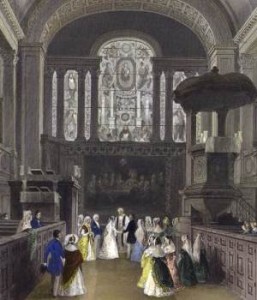 There are many other opportunities to embarrass yourself at a wedding (and given the propensity of brides to hire photographers and videographers, these moments are captured for posterity). Even if you are only a guest, you aren’t immune to being caught up in the wedding disaster hall of fame. Dance floor escapades, bouquet toss brawls, and unplanned toasts are all fodder for the awkward situation generator.
There are many other opportunities to embarrass yourself at a wedding (and given the propensity of brides to hire photographers and videographers, these moments are captured for posterity). Even if you are only a guest, you aren’t immune to being caught up in the wedding disaster hall of fame. Dance floor escapades, bouquet toss brawls, and unplanned toasts are all fodder for the awkward situation generator.
Got a few guests who’ve indulged too much at the open bar? The chances of chagrin inducing capers increase exponentially.
My Altar Moment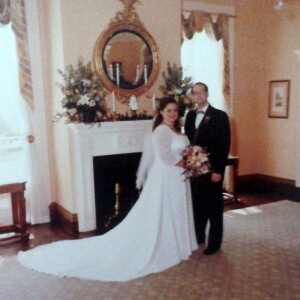 Me and My Hubby, nine years ago
Me and My Hubby, nine years agoI have to say, though, that I’ve never heard of someone else having the same experience as I did. I’ve heard of flubbed up vows, tongue-tied grooms, and ministers forgetting their notes, but I think I’m fairly unique in my story.
Fortunately, it wasn’t me, although I nearly caught the giggles, which would have made the rest of the ceremony very difficult.
What happened? Well, the minister called my husband a woman. He said, “Do you, Kristi, take this woman…” I very nearly lost it. In his defense, the poor man was very nervous. As a dear friend of the family, he was worried about making a mistake in the middle of the wedding. And then he did.
His own daughter is getting married this weekend. I don’t think he’s officiating the ceremony.
What about you?Have you been to a wedding where things didn’t quite go as planned? What hilarity ensued at your own wedding?
Originally posted 2012-06-06 10:00:00.
The post A Funny Thing Happened On the Way to the Altar first appeared on Vanessa Riley's Regency Reflections.
January 12, 2025
My Grateful Heart, Well Mostly Grateful
Vanessa here,
My phone rings every hour on the hour, in spite of the pile of work on my desk. Grumbling, I still find gratitude in my spirit.
At least, I have a good cellular connection. At least, someone seeks and values my opinion.
The deadlines, I thought sufficiently spaced, all collide. Worrying, I search for gratitude in my spirit.
I’ll sleep next week knowing I’ve accomplished much. It shall be sweet sleep.
In addition to my many jobs, now I shall be a chauffeur carrying my child to her summer camps. Frustrated, I sing a worship song to stir up gratitude in my spirit. I’m off-key but free in Jesus.
Moreover, gas prices have come down by fifty cents. The look of joy on my daughter’s face as she learns something new is priceless.
My husband deployed Sunday, his 4th deployment in 18 months. Lonely, I hope to find gratitude and understanding in my spirit.
He loves his job, fighting for America. Pride for him swells in my heart.
I need a referral for a referral to see my doctor. Pacing, I’m chanting to saturate my spirit with gratitude.
At least, my family has health care. At least, they don’t need a lot of blood for a cholesterol check. Well, I hope they don’t.
My shade of lipstick has been discontinued. My shade. I’m done. All is lost.
Nothing but Miss D’s New Orleans Style Caramel Popcorn
After binging, I seek true nonfattening spiritual comfort food.
Colossians 3:10-11,15-17, King James Version
10 And have put on the new man, which is renewed in knowledge after the image of him that created him:
11 Where there is neither Greek nor Jew, circumcision nor uncircumcision, Barbarian, Scythian, bond nor free: but Christ is all, and in all.
15 And let the peace of God rule in your hearts, to the which also ye are called in one body; and be ye thankful.
16 Let the word of Christ dwell in you richly in all wisdom; teaching and admonishing one another in psalms and hymns and spiritual songs, singing with grace in your hearts to the Lord.
17 And whatsoever ye do in word or deed, do all in the name of the Lord Jesus, giving thanks to God and the Father by him.
May you find your heart thankful today for your many blessings. Let your spirit sing that the valleys of despair are not too deep. Be emboldened to climb every mountain.
May a smidgeon of gratitude, for everything, find its home in you.
Originally posted 2012-06-01 10:00:00.
The post My Grateful Heart, Well Mostly Grateful first appeared on Vanessa Riley's Regency Reflections.
January 11, 2025
Interview and Giveaway with Author Jillian Kent
Naomi Rawlings here today, and I’ve got a special guest to introduce: Jillian Kent, author of the newly released novel Chameleon. Jillian has graciously agreed to giveaway one copy of her novel to someone who reads the interview and then leaves a comment below. The contest will end Saturday at midnight and is open only to U.S. residents. Here’s a bit about Jillian:
Jillian is employed full-time as a counselor for nursing students in a hospital based college. She and her husband are both social workers and met in West Virginia and they’ve been married for 31 years.
Jillian can’t believe Book Two of the Ravensmoore Chronicles, Chameleon, is on the shelves and in the cyberspace bookstores! It was just this time last year that her first book, Secrets of the Heart, The Ravensmoore Chronicles, Book One hit the shelves. Jillian says, “It’s been a year of growth and change in the publishing world and the constant personal challenge of seeking balance while writing a new book, working as a counselor, and enjoying my family. This has taken the development of new time management skills.”
So without further ado, here’s a few Regency questions I asked of Jillian:
1. What drew you to write during the Regency Time Period?
That’s the time period I like to read.
2. Tell us what year your book is set in and why you chose that particular time.
Chameleon, The Ravensmoore Chronicles, Book Two is set in 1819.
3. What’s your favorite, unique Regency aspect of the novel, something you wouldn’t have been able to include in a novel set in another time or place?
I had many favorite aspects of this novel. This is just one of those novels that will be difficult for me to top as a personal best. I really believe that. I don’t know how others will judge it, but it’s everything I wanted it to be. Here’s a brief scene that includes Carlton House that I think adds that Regency-ish aspect you’re talking about.
Witt, with Ravensmoore at his side, walked through the Carlton House main entrance, which was graced with six Corinthian columns. Inside they were greeted by a grand staircase, chandeliers, marble floors, and ceilings painted with scenes of myths and legends. Though he’d seen the place many times, he was again struck by the grandeur, the paintings by Gainsborough and Reynolds, and portraits by Van Dyck and Rembrandt.
Grand indeed.
When he’d last entered only a few hours earlier, it had been through the rear entrance of the palace with Stone dripping blood onto the polished marble. This time, his attention was on Ravensmoore and the argument that had ensued in the carriage prior to their arrival.
4. What are the biggest challenges to writing in the Regency Period?
As much as I read about and study this era, I feel like there is so much yet to learn. I’m always terrified of making an error. I want to make the time period come alive and want readers to feel like they are there in London, in Parliament, seeing what was to be seen in those days and smelling the smells, some of which were not so lovely in town.
5. What initially drew you to be interested in writing books set during the Regency Era?
I discovered England when I spent a semester living in Oxford for part of my senior year of college in 1976.
6. Who is your favorite Regency Author?
Oh, that’s hard. I’m not going to pick a CBA author because I love all of them. In the ABA I’d have to say Julia Quinn.
7. What is your favorite Regency Food?
Any kind of dessert but no fruit cake. I love custards. Here’s a nice page of desserts. http://www.janeausten.co.uk/online-magazine/regency-recipes/desserts/
8. What is your favorite Regency setting?
London and Yorkshire. I love the moors and the mist.
******
Jillian, thanks so much for being with us today, and what a lovely interview you gave. How lucky you were to spend a semester in England. You must have loved it. I’m afraid I’m not very well traveled, but I’m jealous of those who are! I’d have to agree with you that Julia Quinn is one of my favorite secular Regency authors. She can make the simplest situations so hilarious, and I love that about her. And I’m so not a fruitcake fan. So I agree with you about the desserts. Thanks for sharing the recipe website.
Here’s some more information about Jillian Kent, and Chameleon:
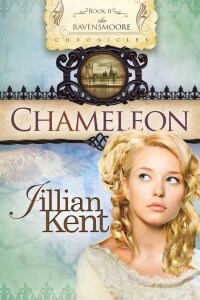 How much can you really know about someone?
How much can you really know about someone?
Lady Victoria Grayson has always considered herself a keen observer of human behavior. After battling a chronic childhood illness that kept her homebound for years, she journeys to London determined to have the adventure of a lifetime.
Jaded by his wartime profession as a spy, Lord Witt understands, more than most, that everyone is not always who they pretend to be. He meets Victoria after the Regent requests an investigation into the activities of her physician brother, Lord Ravensmoore.
Witt and Victoria become increasingly entangled in a plot targeting the lords of Parliament. Victoria is forced to question how well she knows those close to her while challenging Witt’s cynical nature and doubts about God. Together they must confront their pasts in order to solve a mystery that could devastate their future.
Chameleon released May 15th from Charisma Media/Realms
A final message from Jillian:
If you read book one you know I’m fascinated with human behavior and how our minds work. This will be even more clear to you if you read Chameleon.:) And if you do read this book PLEASE don’t give away the ending so that others can enjoy the journey the whole way through to its conclusion. Once again you will find yourself in Regency England. You will return to Bedlam. You will meet Devlin’s sister, Victoria, aka, Snoop. It won’t take long to find out why the family calls her Snoop. I hope you will escape into the past with me and you, just like some of my characters may find faith for the future. If you are a sleuth at heart you will love this story. If you want to read the first chapter of this novel to see if it’s your kind of read please visit my website at http://jilliankent.com/books.html You can also join in the conversation on my blog anytime.
Other than my personal blog I also blog with the other Realms writers at Just the Write Charisma. http://justthewritecharisma.blogspot.com/
I’m very proud of the Well Writer column that I organized with the encouragement of Bonnie Calhoun. You can find it here: http://www.christianfictiononlinemagazine.com/brilliant_well.html
If you’re interested in being entered in the giveaway for Chameleon, please leave a comment below, and thank you so very much for stopping by to meet Author Jillian Kent today.
Originally posted 2012-05-30 10:00:00.
The post Interview and Giveaway with Author Jillian Kent first appeared on Vanessa Riley's Regency Reflections.

